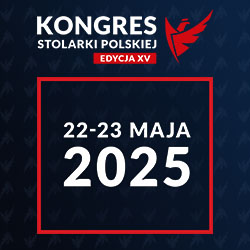Open Access (Artykuł w pliku PDF)
From traditional to agile construction process management – multi-hybrid approach
dr hab. inż. Jerzy Pasławski, prof. PP, Politechnika Poznańska, Wydział Inżynierii Lądowej i Transportu
ORCID: 0000-0002-5570-2363
Adres do korespondencji: Ten adres pocztowy jest chroniony przed spamowaniem. Aby go zobaczyć, konieczne jest włączenie w przeglądarce obsługi JavaScript.
DOI: 10.15199/33.2023.01.04
Oryginalny artykuł naukowy
Streszczenie. W artykule wskazano, że umiejętne połączenie metod tradycyjnych (harmonogram, model sieciowy) i współczesnych (elastyczność, zwinność, lean management), zwłaszcza w przypadku wykorzystania idei Budownictwa 4.0 daje szanse na doskonalenie zarządzania procesami na bazie z jednej strony stabilizacji wydajności, a z drugiej dostosowania do zmieniających się warunków otoczenia. Dzięki systemowi cyberfizycznemu oraz monitoringowi i możliwości zarządzania w czasie rzeczywistym istnieje możliwość zapewnienia realizacji założonego głównego planu pomimo ciągłych zmian w otoczeniu wewnętrznym i zewnętrznym. Konieczność uwzględnienia elastyczności pojawiła się w dziedzinie zarządzania procesami budowlanymi u progu 21. wieku i trwa, koncentrując się na Agile Management. Synergia wynikająca z zastosowania jednocześnie kilku podejść wydaje się warunkiem osiągnięcia sukcesu w postaci zgodności rzeczywistego przebiegu z planem.
Słowa kluczowe: harmonogram; model sieciowy; PERT; Agile Management; elastyczność; Lean Construction; Budownictwo 4.0, Industry 5.0; zarządzanie procesami.
Abstract. This article indicates that the skillful combination of traditional methods (schedule, network model) and modern methods (Flexibility, Agility, Lean Management), especially with the use of the idea of Construction 4.0 gives the opportunity to improve process management based on the stabilization of performance on the one hand, and, on the other, adaptation to changing environmental conditions. Thanks to the cyber-physical system as well as real-time monitoring and management, it is possible to ensure the implementation of the assumed master plan despite constant changes in the internal and external environment. The need to consider flexibility emerged in the field of construction process management at the turn of the 21st century and continues to focus on Agile Management. The synergy resulting from the simultaneous use of several approaches seems to be the condition for achieving success in the form of compliance of the actual mileage with the plan.
Keywords: schedule; network model; PERT; Agile Management; Flexibility; Lean Construction; Construction 4.0; Industry 5.0; process management.
Literatura
[1] Wysocki RK. Effective project management. 2017. John Wiley and Sons.
[2] Kaczorowska A. Traditional and agile projectmanagement in public sector in Poland, scientific Papers of Silesian University of Technology. Organization and Management Series. 2020; 149: 287 – 302.
[3] Schwab K. The Fourth Industrial Revolution. Crown Business. 2017. New York.
[4] EU 2022. Industry 5.0: A transformative vision for Europe ESIR Policy Brief No. 3, Publications Office of the European Union, Luxembourg.
[5] Kumar A, Kumar S. Industry 4.0: Evolution, Opportunities and Challenges, International Journal of Research in Business Studies. 2020; 5 (1): 139 – 148.
[6] Trocki M. (red.). Metodyki i standardy zarządzania projektami. 2022. Polskie Wydawnictwo Ekonomiczne.
[7] Chauvet A. Metody zarządzania. Przewodnik. 1997. Poltext, Warszawa.
[8] Matejun M. Ewolucja nauk o zarządzaniu. 2012. Oficyna Wolters Kluwer business, Warszawa.
[9] Khanagha S, Volberda HW, Alexiou A, Annosi MC. Mitigating the dark side of agile teams: peer pressure, leaders’ control, and the innovative output of agile teams. Journal of Product Innovation Management. 2021; 39 (3): 334 – 350.
[10] Griffin R W. Podstawy zarządzania organizacjami. 2022.Wydawnictwo Naukowe PWN, Warszawa.
[11] Adamiecki K., 2022. Encyklopedia Zarządzania, pobrano 03.05.2022 z Internetu: https://mfiles. pl/pl/index. php/Karol_Adamiecki.
[12] Kelley J, Walker M. Critical-Path Planning and Scheduling. Proceedings of the Eastern Joint Computer Conference. 1959; 160 – 173.
[13] Malcolm DGJH, Roseboom JH, Clark CE, FazarW. Application of a Technique for Research and Development Program Evaluation, Operations Research. 1959; 7 (5): 646 – 669.
[14] Lindley DV. Understanding uncertainty. 2006. John Wiley and Sons, New York.
[15] Samset K, Volden GH. Front-end definition of projects: Ten paradoxes and some reflections regarding project management and project governance. International Journal of Project Management. 2016; 34 (2): 297 – 313.
[16] Mintzberg H. The rise and fall of strategic planning. 1994.Warlow,UK: Pearson Education Limited.
[17] De Meyer A, Loch CH, Pich MT. From variation to chaos. MIT Sloan Management Review. 2002; 43: 60 – 67.
[18] Floricel S, Miller R. Strategizing for anticipated risks and turbulence in large-scale engineering project, International Journal of Project Management. 2002; 19 (8): 445 – 455.
[19] Beser C, Hobbs B. The paradox of risk management; a project management practice perspective. International Journal of Managing Projects in Business. 2012; 5 (2): 230 – 247.
[20] Mc Kinsey&Company 2020. Lean management or agile? The right answermay be both, pobrano dnia 6.05.2022 z Internetu: ww.mckinsey. com/capabilities/ operations/our-insights/lean-management-or-agile- the-right-answer-may-be-both
[21] Forcael E, Ferrari I, Opazo-Vega A, Pulido- -Arcas JA. Construction 4.0: A Literature Review. Sustainability. 2020; 12 (22): 9755.
[22] Sobotka A, Czaja J. Analysis of factors stimulating and conditioning application of reverse logistics. Procedia Engineering. 2015; 122: 11 – 18.
[23] Zasa FP, Patrucco A, Pelizzoni E. Managing the hybrid organization: how an agile and traditional project management coexist? Research Technology Management. 2021; 64 (1): 54 – 63.
[24] Kapliński O. Problems of the information technologies use in polish construction sector. State of the art. Archives of Civil Engineering. 2009; 55(2): 173 – 197.
Przyjęto do druku: 17.10.2022 r.
Materiały Budowlane 01/2023, strona 15-19 (spis treści >>)
































